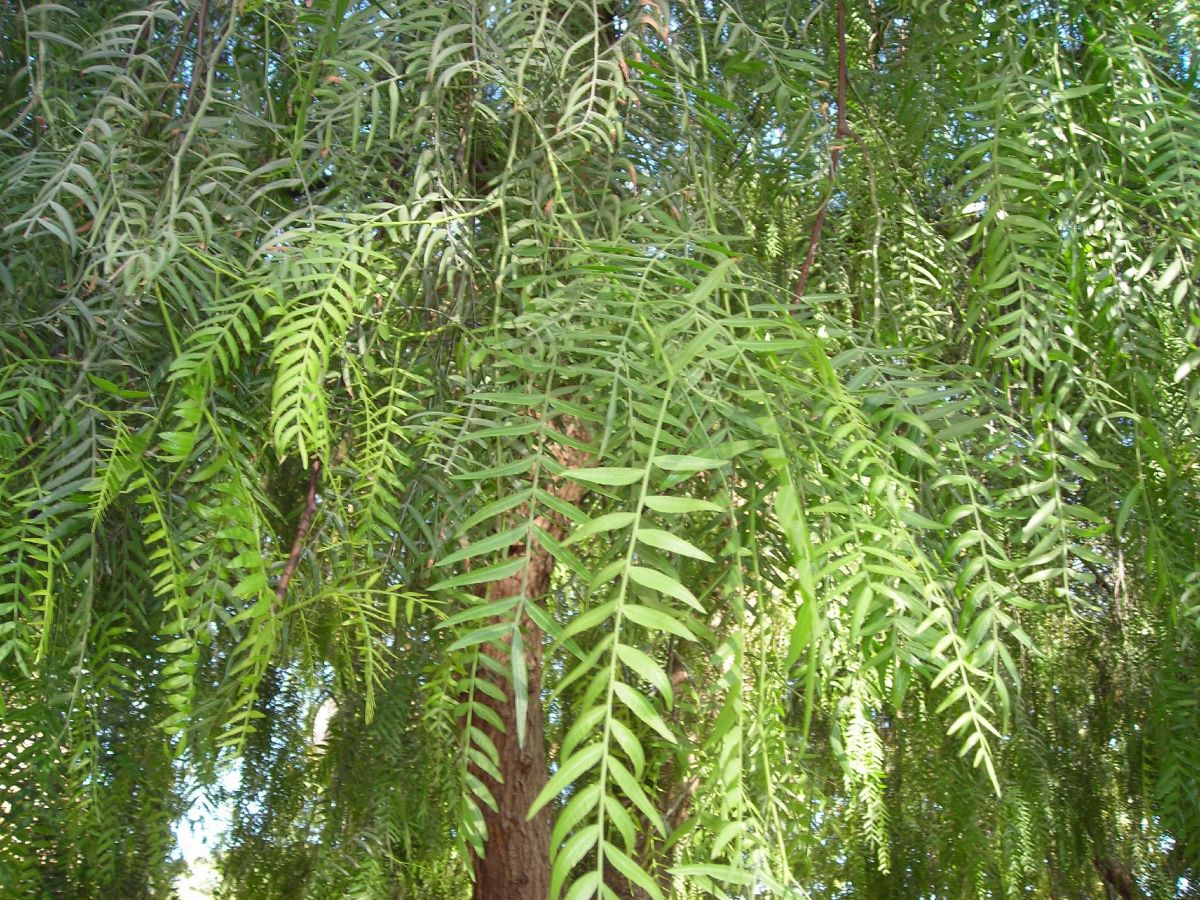
Image – Flickr/TreesOfTheWorld.net
Few species of evergreen trees are so hated and loved at the same time as it happens to us with the Soft tendons. A tree that for many grows too fast and is very adaptable, two characteristics that others, wishing to have a plant that gives them good shade, love it.
And if we continue talking about its adaptability, we have to highlight its resistance to drought. In fact, in hot and dry climates it is easy to find it planted in parks, sports centers and of course on sidewalks, although this is not always the best place for it. But what else can the false pepper tree offer us, the name by which it is best known among Spanish-speakers?
What is the Soft tendons?
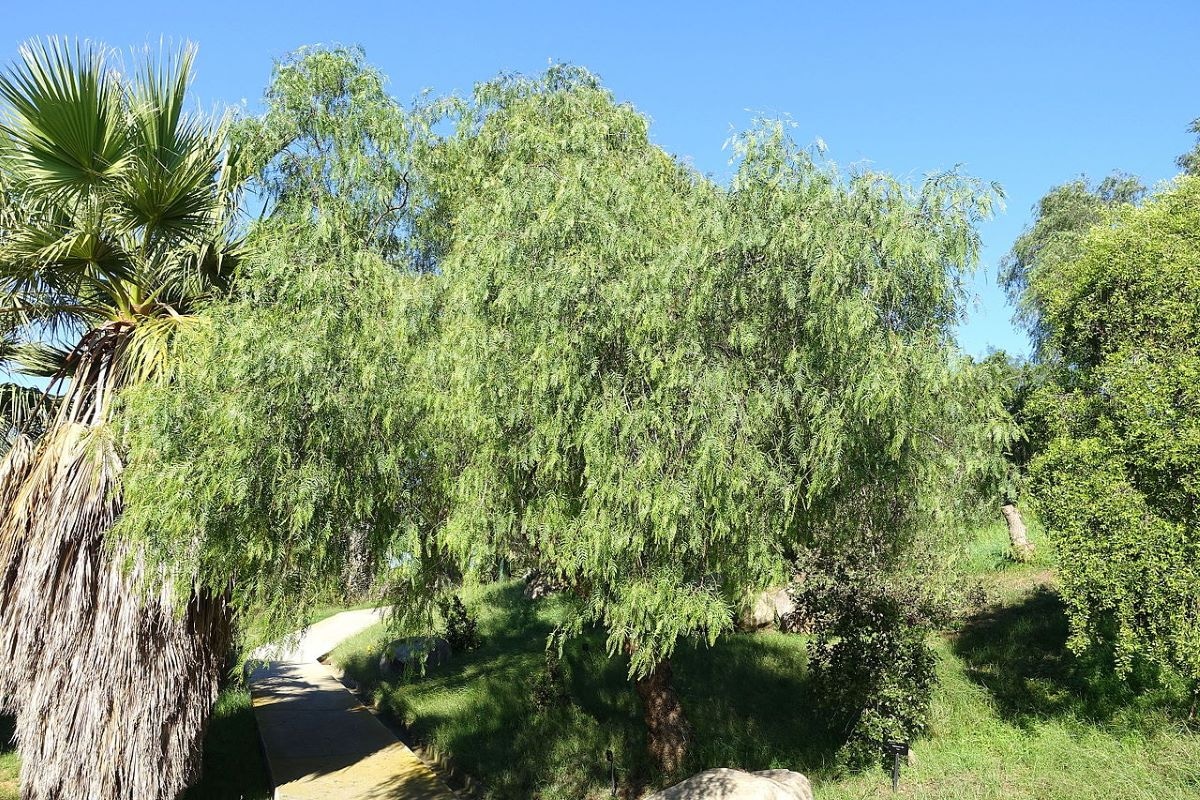
El Soft tendons, called false pepper or aguaribay, is an evergreen tree native to South America, being especially abundant in the Central Andes. It has a trunk with a tendency to lean a little, about 30 centimeters in diameter, and a rounded crown. with numerous branches from which leaves that can be imparipinnate or paripinnate arise. These are also green, with a size between 9 and 30 centimeters long.
Blooms in spring, when temperatures recover after winter. The inflorescences are up to 25 centimeters long, and are composed of a group of small white flowers, 1 centimeter in diameter. The fruit is globe-shaped, approximately 5 millimeters in diameter, and reddish in color when fully ripe.
The total height of the plant is usually 6 meters, but depending on where it grows and if it has its basic needs covered, it can sometimes exceed 10 meters. Life expectancy also varies a lot, but is around 50 years.
How is the root of the molle?
To know what exact location to put it in, you have to know that It has a deep tap root (main), and other secondary ones that are also long.. In fact, it should not be planted less than five meters away from the pool, pipes or anything that can break, such as soils with soft pavements.
How long does molle take to grow?
It is estimated that in just 10 years of age it can reach 6 meters in height. During its youth it usually grows somewhat faster, up to 1 meter per year.
What uses does molle have?
The false pepper pot has these uses:
- Ornamental: either as an isolated specimen or in rows, it is a plant that produces pleasant shade throughout the year. In addition, it is also often worked as a bonsai.
- Medicinal: Both the bark and the resin are used to heal wounds, tone and as a muscle relaxant. On the other hand, the leaves in a poultice can be used to relieve pain caused by rheumatism.
- Other uses: the seed, if rubbed against the skin, is a good mosquito repellant.
Is it an invasive species?
For some yes, but it has not been included in the Spanish Invasive Species Catalog. Now, yes, there is talk of this tree in the Atlas of Invasive Alien Plants in Spain, mentioning its invasive nature in the United States.
Until the situation changes its possession and cultivation will continue to be allowed. But it should not be introduced into the natural environment. This should be logical, common sense, but it is important to protect the native flora.
What are the care of the Soft tendons?
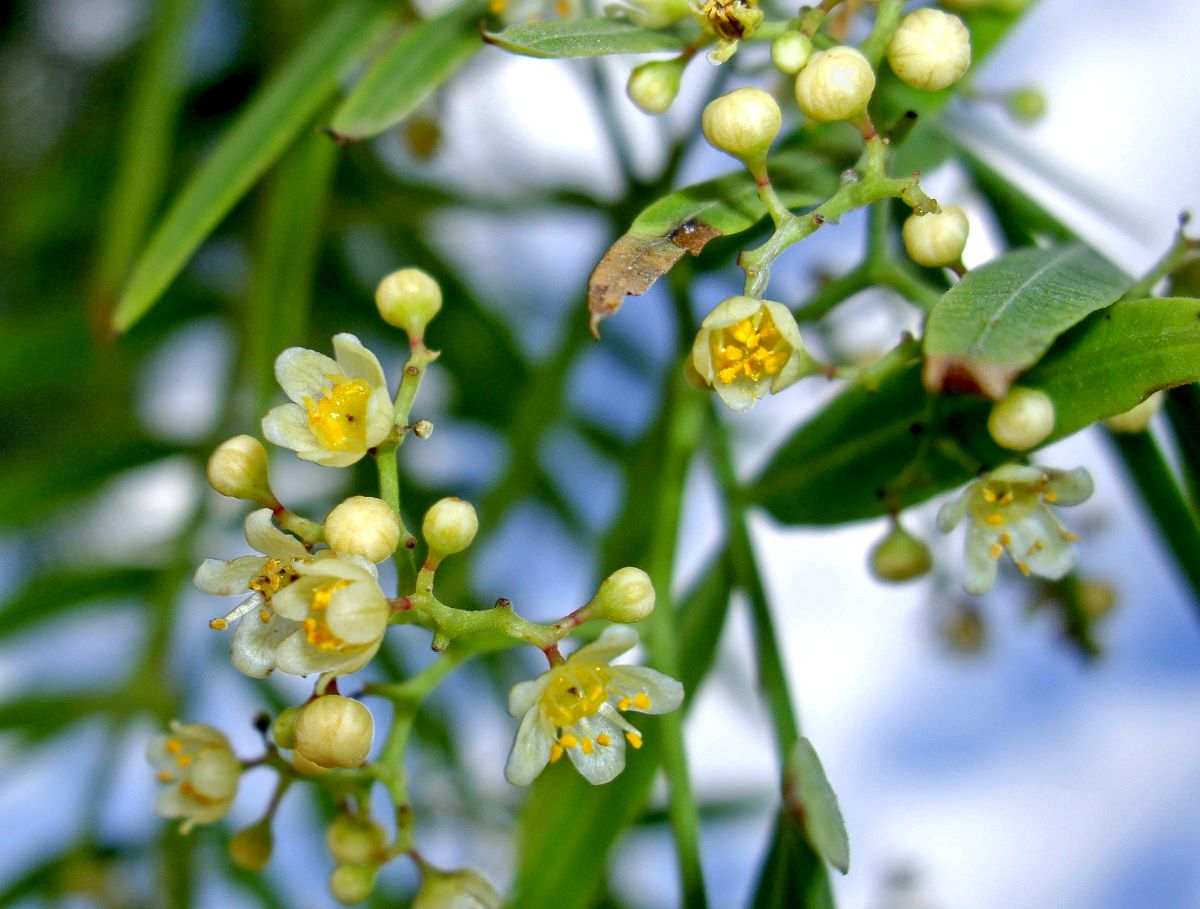
Image - Flickr / S BV
If you dare to have a Soft tendons, first of all it is necessary that you know what you have to do to make a big tree and that it is also healthy:
Location
It is a tree that appreciates receiving direct sunlight. In the shade its growth would not be the same: it would have etiolated branches (that is, longer and thinner than normal as a result of that incessant search for light), and it is possible that it would also have larger leaves than they would if were in the sun.
Of course, and although it is obvious, it must be outside. Not only because of the issue of light, but also so that it receives rainwater when it falls, the wind, the humidity.
Earth
It is a plant that adapts to almost any type of floor, the only thing you have to keep in mind is that it is better that it is well drained, since excess water would harm it.
In case you want to have it in a pot, it is important that you know that it can only be in it for a few years, with universal substrate (for sale here) for example, due to its rapid growth. When it measures about 50 centimeters in height, it should already be planted in the ground.
Irrigation
El Soft tendons that has been planted in the ground for a minimum of one year, resists drought quite well if a minimum of 300mm of precipitation falls and if the rains fall throughout the year.
But if it takes less time, if it's potted, or if the weather is drier, it will be watered about twice a week in summer, except in winter, which will be 1.
Subscriber
The subscriber is not necessary, but If it is grown in a pot, it is advisable to add a liquid fertilizer. (as this), if possible of organic origin, at least once a month during spring and summer. This is because, as it grows fast, the nutrients that are initially in the substrate are depleted in a short period of time.
Multiplication
The false pepper multiplies well from seed in spring. You simply have to sow them, individually or in groups of two, in pots of 6,5 or 8,5 centimeters in diameter with substrate for seedbeds (for sale here) for example, or universal substrate.
Bury them no more than a centimeter, and then pour copper over them. In this way, you will prevent fungi from damaging it. Finally, put them outside, in a sunny spot, and water the soil whenever you see it drying out.
They usually germinate soon, in about 5-10 days, but can take up to two-three months.
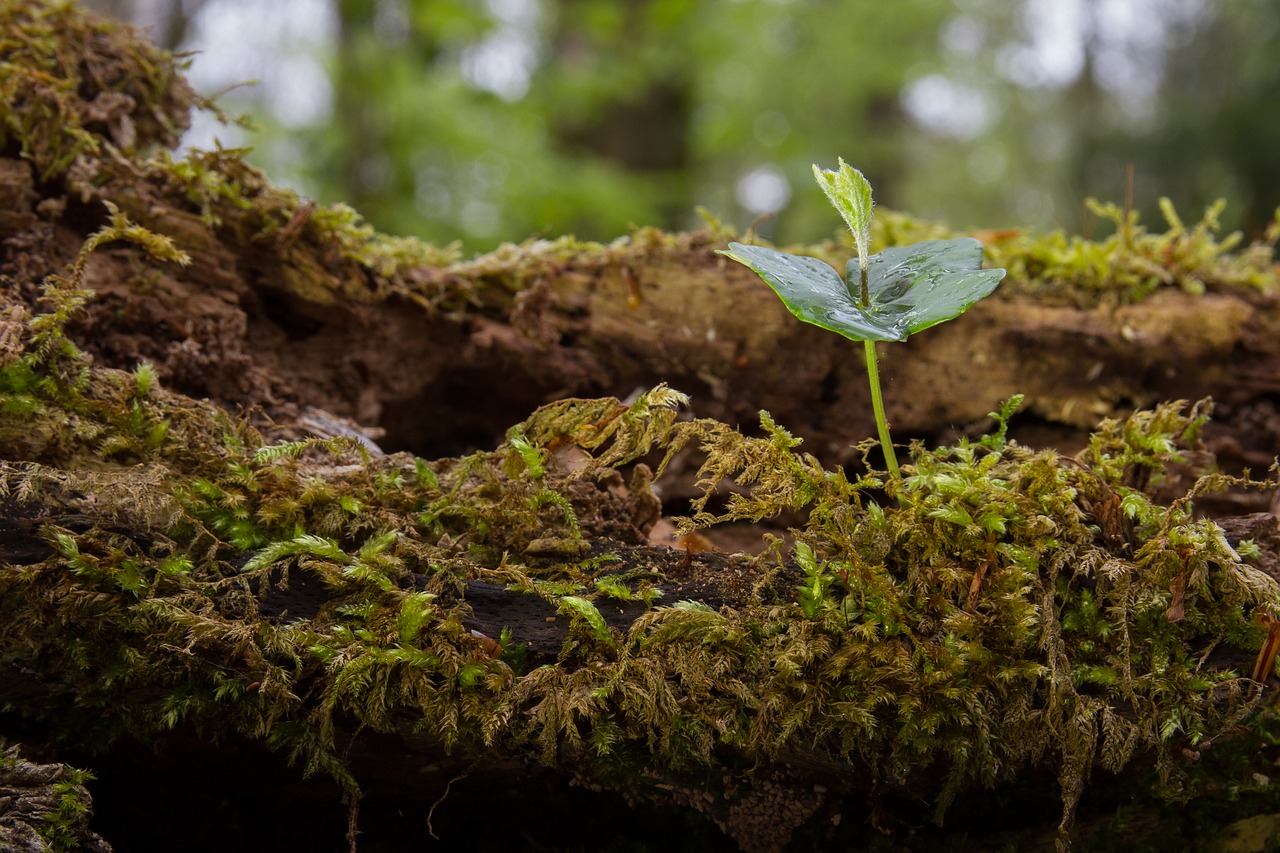
Plagues and diseases
Does not have.
Rusticity
Resists up to -5 ° C.
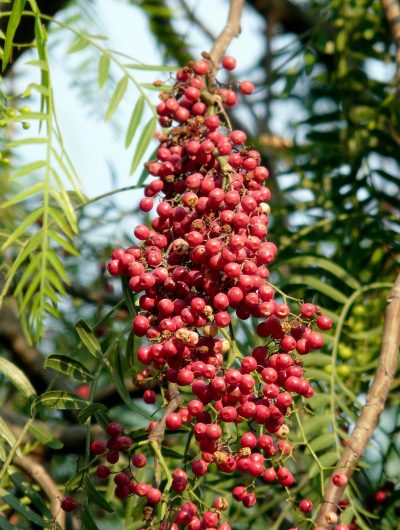
Image - Flickr / S BV
What do you think of Soft tendons? Like?
I have a molle tree but some brown spots are coming out on its leaves, how can I help it? I'm afraid it's some kind of fungus.
Hello Cristina.
Have you checked if those stitches can be removed by hand? Is that if so, more than fungi could be limpet-type mealybugs. These are removed with an anti-cochineal insecticide, or with diatomaceous earth.
If they don't go away, then yes, it's fungus. And you could treat the tree with fungicides that contain copper, and space out the waterings more since the fungi appear when the humidity is excessive.
Greetings.
I have a pepper tree and it grows very slowly, I don't know where I was wrong, I cut the lower branches and now I pour water every 15 days, I live in Calama
Hello Mario.
How is the weather there? It is that an irrigation every 15 days can be little if the temperatures exceed 20ºC and there are many days in a row of sun.
Is it potted or in the ground? If it is in a pot, you have to water a little more, every 7 days or even twice a week.
Greetings.